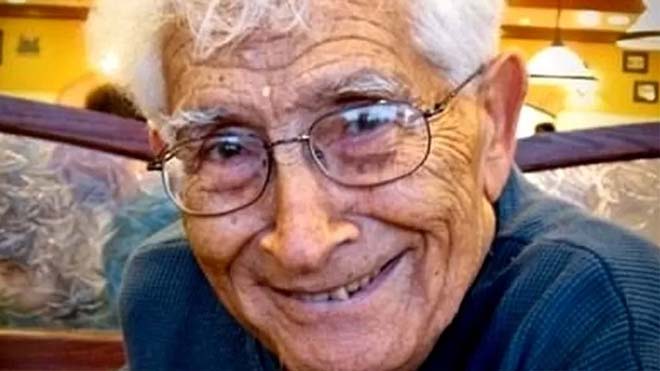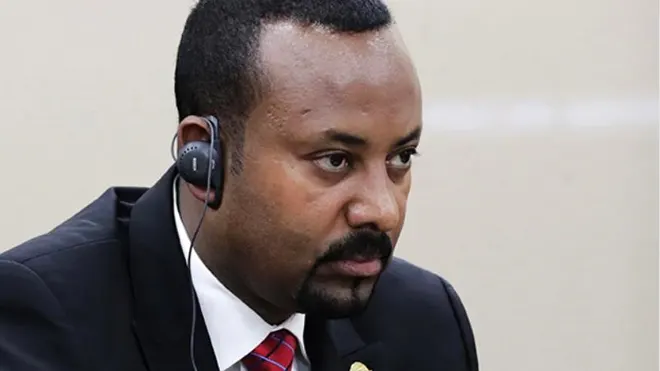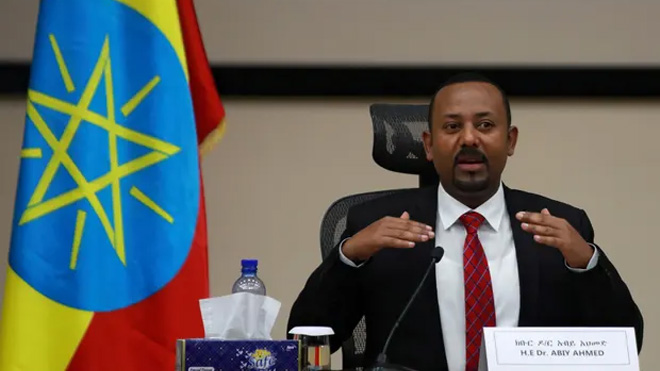Containing Iraq: Sanctions Worked
(July/August 2004 – “Foreign Affairs”)
Summary: The failure to find weapons of mass destruction in Iraq has prompted much handwringing over the problems with prewar intelligence. Too little attention has been paid, however, to the flip slide of the picture: that the much-maligned UN-enforced sanctions regime actually worked. Contrary to what critics have said, we now know that containment helped destroy Saddam Hussein's war machine and his capacity to produce weapons.
SUCCESS DISREGARDED
The Bush administration's primary justification for going to war against Iraq last year was the threat posed by Saddam Hussein's weapons of mass destruction (WMD) programs. But almost as soon as U.S. forces took Baghdad, it became clear that this fear was based on bad intelligence and faulty assumptions. Since then, the failure to find WMD in Iraq has caused a furor.
Sympathetic analysts argue that Washington had no way of knowing how serious the threat of Iraqi WMD was, so intelligence agencies provided the administration with a wide-ranging set of estimates. In the post-September 11 security environment, the argument goes, the Bush administration had little choice but to assume the worst. Critics charge that the White House inflated and manipulated weak, ambiguous intelligence to paint Iraq as an urgent threat and thus make an optional war seem necessary. A recent report by the Carnegie Endowment for International Peace, for example, found not only that the intelligence community had overestimated Iraqi chemical and biological weapons capabilities but also that administration officials "systematically misrepresented" the threat posed by Iraqi weapons.
Public debate has focused on the question of what went wrong with U.S. intelligence. Given the deteriorated state of Iraq's unconventional weapons programs and conventional military capabilities, this is only appropriate. But missing from the discussion is an equally important question: What went right with U.S. policy toward Iraq between 1990 and 2003? On the way to their misjudgments, it now appears, intelligence agencies and policymakers disregarded considerable evidence of the destruction and deterioration of Iraq's weapons programs, the result of a successful strategy of containment in place for a dozen years. They consistently ignored volumes of data about the impact of sanctions and inspections on Iraq's military strength.
The United Nations sanctions that began in August 1990 were the longest running, most comprehensive, and most controversial in the history of the world body. Most analysts argued prior to the Iraq war -- and, in many cases, continue to argue -- that sanctions were a failure. In reality, however, the system of containment that sanctions cemented did much to erode Iraqi military capabilities. Sanctions compelled Iraq to accept inspections and monitoring and won concessions from Baghdad on political issues such as the border dispute with Kuwait. They also drastically reduced the revenue available to Saddam, prevented the rebuilding of Iraqi defenses after the Persian Gulf War, and blocked the import of vital materials and technologies for producing WMD.
The unique synergy of sanctions and inspections thus eroded Iraq's weapons programs and constrained its military capabilities. The renewed UN resolve demonstrated by the Security Council's approval of a "smart" sanctions package in May 2002 showed that the system could continue to contain and deter Saddam. Unfortunately, only when U.S. troops invaded in March 2003 did these successes become clear: the Iraqi military that confronted them had, in the previous twelve years, been decimated by the strategy of containment that the Bush administration had called a failure in order to justify war in the first place.
EVIDENCE OF ABSENCE
Most coverage of the weapons inspections that began after the Gulf War focused on Baghdad's efforts to stall, evade, and obstruct UN monitors. But despite Saddam's recalcitrance, the record now shows that the UN disarmament program -- which Vice President Dick Cheney dubbed "the most intrusive system of arms control in history" -- decapitated Iraq's banned weapons programs and destroyed the infrastructure that would have allowed it to restart clandestine programs. From 1991 to 1998, the UN Special Commission (UNSCOM) identified and dismantled almost all of Iraq's prohibited weapons. In conjunction with the International Atomic Energy Agency (IAEA), it conducted hundreds of inspection missions at weapons sites and documentation centers, systematically uncovering and eliminating Iraq's nuclear weapons program and most of its chemical, biological, and ballistic missile systems. After four months of further inspections from November 2002 until March 2003 -- which included 237 missions to 148 sites -- the UN Monitoring, Verification, and Inspection Commission (UNMOVIC) confirmed the depleted state of Iraq's capabilities.
Of course, the political assessments of these accomplishments were muted. In Washington during the 1990s, each new weapons report was taken as confirmation of Saddam's perfidy rather than as a measure of success. There was a lingering belief that behind each new discovery lay more hidden contraband. Especially after the terrorist attacks of September 11, 2001, the achievements of UN disarmament were ignored, and Saddam's defiance was taken as confirmation that deadly stockpiles remained. Despite these suspicions, however, progress was being made. As former chief UN weapons inspector Hans Blix wrote in his recent book, "the UN and the world had succeeded in disarming Iraq without knowing it."
The greatest success of the UN disarmament mission was in the nuclear realm. IAEA inspectors found an alarmingly extensive nuclear weapons program when they entered Iraq in 1991, and they set out to destroy all known facilities related to the nuclear program and to account for Iraq's entire inventory of nuclear fuel. In 1997, the IAEA and UNSCOM concluded that there were no "indications that any weapon-useable nuclear material remain[ed] in Iraq" or "evidence in Iraq of prohibited materials, equipment or activities." After four months of resumed inspections in 2002-3, IAEA Director-General Mohamed ElBaradei confirmed that, according to all evidence, Iraq had no nuclear weapons and no program to redevelop them. He reported to the UN Security Council in March 2003 that inspectors had found "no indication of resumed nuclear activities ... nor any indication of nuclear-related prohibited activities at any inspected sites." The IAEA's report noted, "During the past four years, at the majority of Iraqi sites, industrial capacity has deteriorated substantially." (Inspectors also found documentation of the alleged Iraqi attempt to import uranium from Niger to be "not authentic" and rejected claims that Iraq had attempted "to import aluminum tubes for use in centrifuge enrichment.")
UN weapons inspectors also catalogued and destroyed Iraq's once-substantial ballistic missile capability. All but two of the 819 banned Scud missiles known to have existed in Iraq prior to 1990 were accounted for. Although inspectors discovered that Iraq had failed to declare some dual-use equipment and attempted to import Russian ballistic-missile guidance systems, they found no evidence that Iraq had actually developed or flight-tested any prohibited missiles. Anthony Cordesman of the Center for Strategic and International Studies told the Senate Foreign Relations Committee in July 2002, "Iraq has not fired any Scud variants in nearly twelve years."
When UN inspectors returned to Iraq in late 2002, they noted "a surge of activity in the missile technology field." UNMOVIC determined that the Al Samoud II missile exceeded the permitted range (150 kilometers) by 30 kilometers and discovered large chambers that could be used to produce missile rocket motors. But when UNMOVIC officials demanded that the missiles and the chambers be destroyed, Baghdad yielded: eradication was underway when the U.S. invasion began.
UNSCOM achieved similar success eliminating Iraq's chemical and biological weapons programs. After the Gulf War, inspectors discovered stockpiles of chemical weapons. They disposed of 480,000 liters of live chemical agent and more than 3,000 tons of precursor chemicals. As a panel of Security Council experts reported, "the prime [chemical weapons] development and production complex in Iraq was dismantled and closed under UNSCOM supervision and other identified facilities have been put under monitoring." Inspectors also supervised the destruction of Iraq's biological weapons program, especially after Saddam's son-in-law General Hussein Kamel defected and confirmed the large-scale production and weaponization of anthrax, botulinum toxin, and aflatoxin; in 1996, UNSCOM demolished the main biological production facility at Al Hakam. When UNMOVIC inspectors entered Iraq in 2002, they found no evidence of renewed chemical or biological weapons programs.
The considerable deterrent value of weapons monitoring also went unacknowledged by Washington. The presence in Iraq of more than 100 highly trained weapons inspectors equipped with the world's most advanced monitoring technology provided an unprecedented ability to discover any clandestine efforts by Baghdad to redevelop WMD. The Ongoing Monitoring and Verification (OMV) system mandated by the Security Council in 1991, for example, installed an elaborate network of radiological and chemical sensors, cameras, ground-penetrating radar, and other detection systems, bolstered by aerial surveillance and no-notice visits to weapons facilities by inspectors. As Blix concluded in the aftermath of last year's war, "it is becoming clear that inspection and monitoring by the IAEA, UNMOVIC and its predecessor UNSCOM, backed by military, political and economic pressure, had indeed worked for years, achieving Iraqi disarmament and deterring Saddam from rearming." And with the open-ended reauthorization of OMV in 1999, there was solid UN backing for continued monitoring.
Another benefit of UN monitoring must be acknowledged: inspectors were a vital source of intelligence. After UNSCOM inspectors left Iraq in December 1998, just before the start of the Operation Desert Fox bombing campaign, U.S. and UN officials were left blind. Without inspectors on the ground and without the extensive data provided by OMV monitoring instruments, they had no independent means of knowing the status of Saddam's weapons capabilities. Deprived of on-site reports and up-to-date information and forced to rely on testimony from Iraqi defectors, U.S. officials fell back on preexisting worst-case assumptions. The withdrawal of UN inspectors thus set the stage for reliance on the military option in 2003: Washington officials became convinced that regime change was the only way to be sure that Saddam did not have banned weapons.
THE SANCTIONS SAGA
In the past several months, the previously unacknowledged success of UN weapons monitoring and disarmament has become clear. But few analysts have gone a step further to identify the primary reason for this success: the UN-enforced sanctions regime. Dismissed by hawks as weak and ineffective and reviled by the left for its humanitarian costs, the sanctions regime has had few defenders. The evidence now shows, however, that sanctions forced Baghdad to comply with the inspections and disarmament process and prevented Iraqi rearmament by blocking critical imports. And although many critics of sanctions have asserted that the system was beginning to break down, the "smart" sanctions reform of 2001 and 2002 in fact laid the foundation for a technically feasible and politically sustainable long-term embargo that furthered U.S. strategic and political goals.
The story of the nearly thirteen years of UN sanctions on Iraq is long and tortuous. For the first six years, comprehensive sanctions cut Iraq off from all world trade and shut down its oil exports, devastating its economy and society. Coupled with the damage caused by Gulf War bombing, sanctions helped spur a severe humanitarian crisis that resulted in hundreds of thousands of preventable deaths among children during the 1990s. When the oil-for-food program took effect in 1996 -- allowing Baghdad to sell oil and use the revenue, under UN supervision, to purchase approved civilian goods -- the hardships of Iraqi civilians began to ease.
Sanctions were met with considerable skepticism from the start when they failed to force Iraq's withdrawal from Kuwait. Nor did they persuade Iraq to comply with the full range of demands in the cease-fire agreement after the Gulf War. Yet Washington viewed sanctions as a punitive instrument and refused to consider even a partial lifting of sanctions in exchange for partial Iraqi compliance. (That position contradicted Security Council Resolution 687, which stated that sanctions would be lifted once Iraq lived up to UN disarmament obligations.) Meanwhile, Baghdad exploited the humanitarian crisis in Iraq to win international support for the lifting of sanctions.
But despite such political failings and the initial humanitarian cost, sanctions forced Baghdad to make significant concessions on disarmament. Most important was Iraq's acceptance of the OMV system. In October 1991, as Baghdad's resistance to intrusive disarmament became evident, the Security Council approved Resolution 715 mandating continuous monitoring to prevent Iraqi rearmament. Saddam resisted initially, but he yielded in November 1993, resulting in the installation of monitoring equipment in 1994. The pressure of UN sanctions was responsible for extracting this concession. In discussions of the resolution in 1992, Iraqi leaders told UN officials that they wanted concrete assurances that sanctions would be lifted before Iraq would agree to accept the OMV system: they hoped that accepting monitoring would bring them benefits from the Security Council. Russian and French diplomats and UNSCOM Chairman Rolf Ekeus encouraged such reasoning, believing that the prospect of eased sanctions would entice Iraq to comply with monitoring. (When Iraq accepted Resolution 715 in 1991, Russia and France proposed a statement from the Security Council taking note of Iraqi compliance. The United States and the United Kingdom blocked the statement, refusing even to consider easing coercive pressure. Ekeus adjusted his message accordingly. He told the Iraqis that the lifting of sanctions would be an all-or-nothing proposition, depending on full compliance with every aspect of the disarmament mandate.)
Once the ongoing monitoring system was in place, sanctions continued to help force the regime to disarm. There were numerous disputes between UN officials and the Iraqi government, ranging from David Kay's famous 1991 standoff with Iraqi officials in a Baghdad parking lot to the confrontations in 1998 that prompted UNSCOM to withdraw. At several points, Ekeus had to cajole Iraqi leaders to end their obstructionism -- using the pressure of sanctions, and dangling the prospect that they might some day be lifted, to assure compliance. In 1995, for instance, Ekeus and his deputy, Charles Duelfer, threatened to prolong sanctions in order to get Iraqi officials to disclose past efforts to produce VX nerve gas. Without further revelations, they warned, the chances of Iraq's getting the sanctions lifted would be much reduced. In 1997, as Iraqi harassment of inspectors increased, UNSCOM again used the threat of continuing sanctions to overcome resistance. In the face of Iraqi obstruction, the Security Council passed Resolution 1115 in June 1997, temporarily suspending the regular sanction reviews (thereby preventing any action to lift sanctions) and threatening additional unspecified measures unless the harassment of inspectors ceased.
Ekeus described the critical importance of sanctions to the disarmament process -- a "combined carrot-and-stick approach" -- in a 2000 interview: "Keeping the sanctions was the stick, and the carrot was that if Iraq cooperated with the elimination of its weapons of mass destruction, the Security Council would lift the sanctions. Sanctions were the backing for the inspections, and they were what sustained my operation almost for the whole time." And according to former UNSCOM adviser Tim Trevan, Iraqi Foreign Minister Tariq Aziz told un inspectors that "the only reason Iraq was cooperating with UNSCOM was that it wanted to be reintegrated into the international community. Chief among the benefits was the lifting of the economic sanctions."
DESTROYING THE WAR MACHINE
In addition to driving the disarmament process, sanctions undermined Iraqi military capabilities and prevented rearmament by keeping Iraq's oil wealth and imports -- which could be used to produce WMD -- out of the hands of Saddam Hussein. Contrary to the Bush administration's assertion that Iraq was a "gathering" threat, the Iraqi military and weapons programs had, in fact, steadily eroded under the weight of sanctions.
Estimates of the total amount of oil revenue denied the Iraqi government range as high as $250 billion. For the first six years of sanctions, Iraq sold no oil except for a small allowance to Jordan. After the oil-for-food program began, oil sales generated, according to UN figures, $64.2 billion in revenue. But the proceeds from these sales went straight into a UN escrow account, not the Central Bank of Iraq. Sanctions also blocked foreign investment and oil development, which could have increased Iraq's oil output to as much as seven million barrels a day by the late 1990s (compared to a peak of around three million barrels a day prior to the Gulf War).
Of course, no sanctions regime can be 100 percent effective; smuggling and black marketeering inevitably develop. Baghdad labored mightily to evade sanctions, mounting elaborate oil-smuggling and kickback schemes to siphon hard currency out of the oil-for-food program. Investigations by the U.S. General Accounting Office (GAO) and The Wall Street Journal put Iraq's illicit earnings at $1.5 billion to $2.5 billion a year. An updated GAO report estimated that illegal Iraqi revenues from 1997 through 2002 amounted to $10.1 billion, about 15 percent of total oil-for-food revenues during that period.
Still, the sanctions worked remarkably well in Iraq -- far better than any past sanctions effort -- and only a fraction of total oil revenue ever reached the Iraqi government. The funds that Baghdad obtained illicitly were grossly insufficient to finance a large-scale military development program. The government had no other major source of income, in part thanks to the economic impact of sanctions. Revenues from smuggling and kickbacks went mostly toward maintaining Saddam's massive army and internal security apparatus (as well as to building palaces and paying bribes to political loyalists). As a result, almost no money was available for the development of nuclear, chemical, or biological weapons systems, however much Saddam might have wished to rebuild his arsenal. A regime that had previously spent lavishly on its war machine was thus denied the means to rebuild its war-ravaged military.
Indeed, U.S. government figures show a precipitous drop in Iraqi military spending and arms imports after 1990. State Department estimates suggest that spending levels plummeted from over $15 billion in 1989 to less than $1.4 billion a year through the 1990s. The estimated cumulative arms import deficit -- the amount that Iraq would have spent had it continued to import arms at the same pace as it did in the 1980s -- through 1998 was more than $47 billion, a deficit that Baghdad's various weapons-smuggling efforts and black-market schemes could hardly diminish. The Iraqi army thus found itself with, in the words of a 1998 report from the Center for Strategic and International Studies, "decaying, obsolete, or obsolescent major weapons."
The sanctions system also prevented the import of specific items that could be used for the development of long-range ballistic missiles and nuclear, chemical, and biological weapons. The United States especially, but other major powers as well, made a major investment in sanctions enforcement; the Security Council remained united in its resolve to deny Iraq the means to rebuild its weapons programs; and the dragnet was highly effective in denying Iraq the means to redevelop WMD. Led by Washington, intelligence, military, and police officials in many countries mounted a massive effort to block shipments of prohibited weapons to Iraq. State Department nonproliferation specialists vetted oil-for-food contracts to screen for possible weapons imports. The U.S. Navy established the Maritime Interception Force, a multinational operation that over a ten-year period searched more than 12,000 vessels in the northern Persian Gulf. Such measures led to a series of high-profile successes. In August 1995, for example, U.S. officials received a tip from Israeli intelligence about a delivery of 115 missile gyroscopes passing through Jordan to Iraq. The CIA immediately dispatched a team to Amman and intercepted the guidance equipment. A month later, UNSCOM officials fished another shipment of gyroscopes from the bottom of the Tigris River, where Iraqi officials had dumped them. A combination of watchful external intelligence and inspectors on the ground prevented the guidance systems from ever being used.
Similarly, the specialized aluminum tubes that were a source of controversy in the prewar debate never reached Iraq. Regardless of whether they were to be used for uranium enrichment, as the administration claimed, or for conventional rockets, as UN experts reported, the tubes were intercepted before arriving, according to the British government's September 2002 dossier. The dossier documented foiled Iraqi attempts to purchase vacuum tubes, a magnet production line, a large filament-winding machine, fluorine gas, and other items that could have nuclear weapons-related applications. As long as sanctions remained effective, the report found, "Iraq would not be able to produce a nuclear weapon." It also noted that "sanctions and the earlier work of the inspectors had caused significant problems for Iraqi missile development," by preventing Iraq from buying potential ingredients of rocket fuel such as magnesium powder and ammonium chloride.
Ironically, rather than bolstering the case for sanctions, the interdiction of prohibited items was often seen as a sign of their failure. Those skeptical of sanctions focused on Iraq's attempts to smuggle material in the first place, not on their having been thwarted. Inflated intelligence assumptions mistook Iraq's nefarious intentions for real capabilities, even in the face of evidence showing how deteriorated the latter were. In reality, sanctions had left Saddam's once-vaunted war machine in a state of utter disrepair.
A STRONGER NET
In the run-up to war last year, some in Washington acknowledged the impact of inspections and sanctions but believed that sanctions would soon collapse. Kenneth Pollack reiterated this argument in a January 2004 article in The Atlantic Monthly, insisting that war was necessary because "containment would not have lasted much longer" and Saddam "would eventually have reconstituted his WMD programs." Support for sanctions did indeed begin to unravel in the late 1990s. But beginning in 2001, the Bush administration launched a major diplomatic initiative that succeeded in reforming sanctions and restoring international resolve behind a more focused embargo on weapons and weapons-related imports.
One major reason for this renewed consensus was the creation of a new "smart" sanctions regime. The goal of "smart" sanctions was to focus the system more narrowly, blocking weapons and military supplies without preventing civilian trade. This would enable the rehabilitation of Iraq's economy without allowing rearmament or a military build-up by Saddam. Secretary of State Colin Powell launched a concerted diplomatic effort to build support for reformulating sanctions, and, in the negotiations over the proposed plan, agreed to release holds that the United States had placed on oil-for-food contracts, enabling civilian trade contracts to flow to Russia, China, and France. Restrictions on civilian imports were lifted while a strict arms embargo remained in place, and a new system was created for monitoring potential dual-use items. As the purpose of sanctions narrowed to preventing weapons imports without blocking civilian trade, international support for them increased considerably: "smart" sanctions removed the controversial humanitarian issue from the debate, focusing coercive pressure in a way that everyone could agree on. The divisions within the Security Council that had surfaced in the late 1990s gave way to a new consensus in 2002. The pieces were in place for a long-term military containment system. The new sanctions resolution restored political consensus in the Security Council and created an arms-denial system that could have been sustained indefinitely.
In the months prior to the invasion, as Bush administration officials threatened military action and dismissed sanctions as useless, additional suggestions were offered to strengthen the sanctions system. Morton Halperin, former director of policy planning at the State Department, recommended a "containment plus" policy during July 2002 testimony before the Senate Foreign Relations Committee. The goal of such a system, Halperin said, "would be to tighten the economic embargo of material that would assist Iraq in its weapons of mass destruction and other military programs as well as reducing Iraq's receipt of hard currency outside the un sanctions regime."
Additional measures could have further refined and strengthened the sanctions regime. These could have included provisions to establish sanctions assistance missions and install detection devices on Iraq's borders to monitor the flow of goods across major commercial crossings; to eliminate kickbacks by preventing unscrupulous firms from marketing Iraqi oil and mandating public audits of all Iraqi oil purchases; and to control or shut down the reopened Syria-Iraq pipeline. This last option, especially, was an obvious, feasible step that would have immediately reduced the flow of hard currency to Baghdad. The other measures would have taken more time and diplomatic capital, but the United States had enormous leverage, precisely because it threatened military attack, and it could have used its clout to tighten the noose. Syria and other neighboring states, for example, could have been persuaded to cooperate in containing Iraq in exchange for improved diplomatic relations with Washington. This would have solidified long-term containment and laid the foundation for improved political relations in the region. As with other nonmilitary options for achieving U.S. aims, however, such proposals to enhance containment were cast aside and ignored.
The adoption of "smart" sanctions in Iraq was a diplomatic triumph for the Bush administration. It was followed a few months later by Iraq's acceptance of renewed inspections and Security Council approval of a tougher monitoring regime in Resolution 1441. Indeed, the Bush administration spent its first two years methodically and effectively rebuilding an international consensus behind containment. By the fall of 2002, it had constructed the core elements of an effective long-term containment system -- only to discard this achievement in favor of war.
DEMONSTRATION EFFECT
The Iraq case demonstrates that intelligence estimates that fail to take into account the success of past actions imperil future policy. As Washington begins sensitive dialogues with Iran, Libya, Syria, and North Korea about preventing the proliferation of WMD, this message -- specifically as it relates to sanctions and diplomatic pressure -- could not be more relevant.
The case of Libya shows that sanctions can indeed influence regime behavior in the long term. Muammar al-Qaddafi was once as much an outlaw as Saddam Hussein. But over time, and under the weight of international sanctions, Libya accepted international norms, ended its support of terrorism, and gave up its clandestine efforts to acquire or build WMD. President Bush and other supporters of the war in Iraq have attributed Libya's dramatic turnaround to what Representative Tom Lantos (D-Calif.) termed the "pedagogic value" of the war. But in reality, Libya's reversal began years before. UN sanctions during the 1990s brought about the negotiations that convinced Libya to turn over suspected terrorists for trial in The Hague. The State Department's 1996 report on global terrorism stated, "Terrorism by Libya has been sharply reduced by UN sanctions." Subsequent discussions with Tripoli led to cooperation in the campaign against terror and, most recently, to Libya's full disclosure of prohibited nuclear weapons programs and cooperation in disassembling them.
Senior officials from both the Clinton and the current Bush administrations have confirmed that progress with Libya dated back to the 1990s. Flynt Leverett, senior director for Middle Eastern affairs at the National Security Council in 2003, wrote that the Iraq war "was not the driving force behind Libya's move. ... Libya was willing to deal because of credible diplomatic representations ... that doing so was critical to achieving their strategic and domestic goals." Seif al-Islam al-Qaddafi, influential son of and heir apparent to Qaddafi, told Le Monde that the U.S.-Libyan dialogue began years ago and had nothing to do with the attack on Iraq. Of course, sanctions were not the only factor in Libya's transformation. But the desire to be reintegrated into the world economy was a powerful incentive for reform.
Having failed to understand how sanctions and inspections worked in Iraq, the United States risks repeating its mistake in the future. The crisis of intelligence that pundits and politicians should be considering is not why so many officials overestimated what was wrong in Iraq; it is why they ignored so much readily available evidence of what was right about existing policies. By disregarding the success of inspections and sanctions, Washington discarded an effective system of containment and deterrence and, on the basis of faulty intelligence and wrong assumptions, launched a preventive war in its place.


![[AIM] Asmarino Independent Media](/images/logo/ailogo.png)






